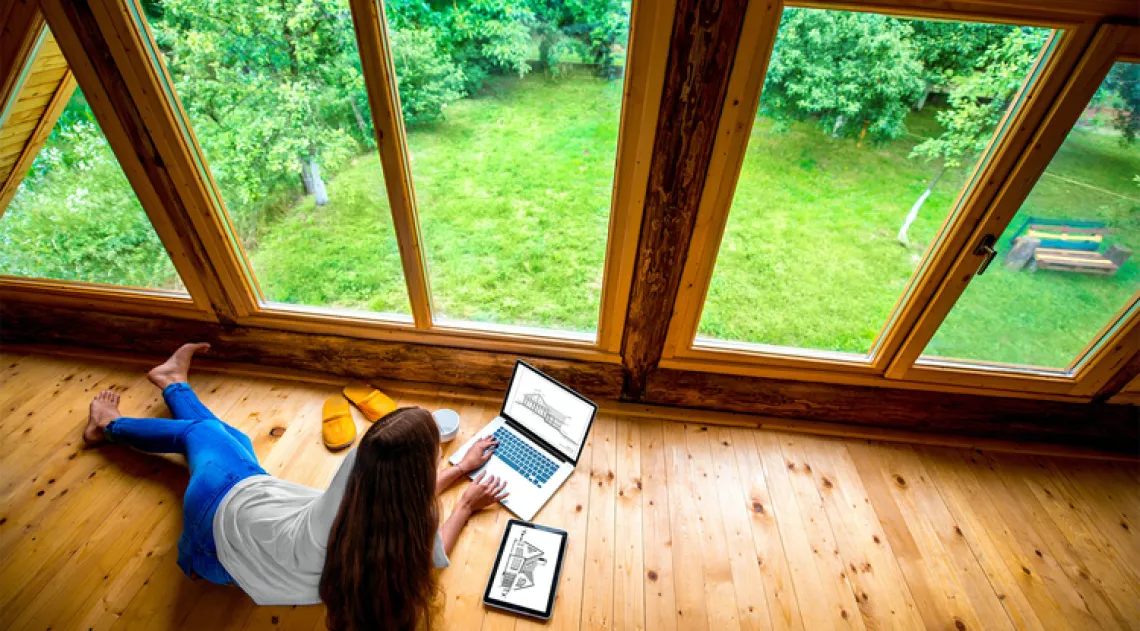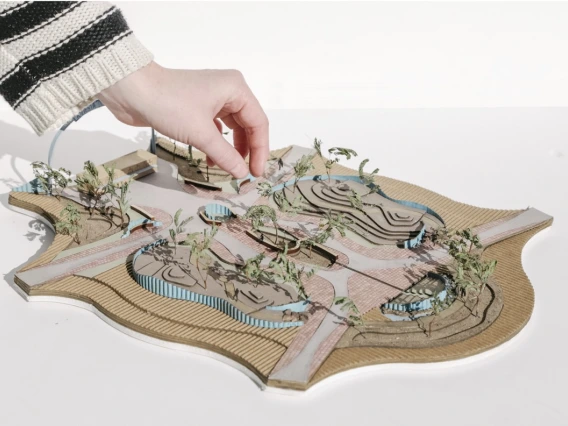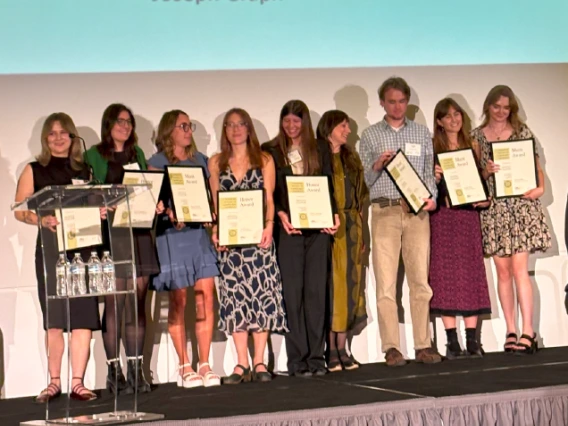Healthy Outcomes in Built Environments

Are you one of the more than 100 million Americans and 1.5 billion worldwide under a shelter in place or stay at home order due to the coronavirus pandemic? Is being made to stay close to home stressing you out?
There are many ways that the physical environment can cause stress or create calm, say University of Arizona researchers.
"A few simple interventions can turn your home from a stressful space into a healing one," says Esther Sternberg, who holds the Andrew Weil Chair for Research in Integrative Medicine. Sternberg is founding director of the university's Institute on Place, Wellbeing & Performance, a partnership that includes the Andrew Weil Center for Integrative Medicine, the College of Medicine - Tucson and the College of Architecture, Planning and Landscape Architecture. The institute is dedicated to a vision of human health that fully encompasses the role of the built and natural environment in health, well-being and healing.
Sternberg, a pioneer in design and health research, suggests that people should think about their homes using their senses—"what you see, hear, smell, touch and do in a space."
What You See
Beautiful views of nature are universally calming, so if you are working from home, try to place your desk or laptop near a window, Sternberg suggests.
"If you don't have a beautiful view, add a few potted plants to the windowsill, find a poster or photo of a favorite view and pin it to the wall near your desk, or surf the internet for beautiful views and put your favorites on your screensaver," Sternberg says.
Even without something nice to look at, sunlight will enhance your mood. If you don't have a window to let in sunlight, full-spectrum lightbulbs or light boxes can boost moods almost as well as some antidepressants, she says.

Altaf Engineer, Assistant Professor of Architecture
"The healing power of full-spectrum or natural light is well known," says Altaf Engineer, assistant professor of architecture, chair of the Health and Built Environment Program at the School of Architecture and faculty member in the Institute on Place, Wellbeing & Performance. "Natural light has many measurable health benefits including but not limited to better sleep, increased productivity and significant improvements in physiological and psychological health."
Looking at a cluttered area is stressful, so now is a good time to reduce your clutter, according to Sternberg.
"Sift through unneeded papers and clear your work area. If you are at home with small children, you can turn this into a game— ask them to help you sort, sift and organize their toys. Try to find a separate place to work, even if it is in your bedroom."
What You Hear
Loud noises are stressful while quiet nature sounds are calming. If you are nowhere near nature sounds, Sternberg suggests looking for nature soundtracks on the internet: ocean waves, rippling brooks, rain, birds, wind in the trees.
"Music can also calm and uplift your mood," Sternberg says. "Listen to your favorite soundtrack as you work. This can help drown out the sound of kids and family members, allowing you to concentrate on your work."
What You Touch
Soft, plushy fabrics tend to be warming and calming, Sternberg says.
"When you are ready for bed, snuggle in a soft comforter or put on a pair of fuzzy socks," she suggests. "The warmth will help you fall asleep."
What You Smell
Fragrances calm in two ways. Some fragrances, like lavender, are actually chemicals that induce sleep and calm. Aromatherapy uses essential oils to aid well-being, and lavender is one of them. Other fragrances, like the smell of apple pie, freshly mown grass or Christmas trees, can evoke memories of happy times and reduce your stress.
"Think of smells that remind you of happy times and re-create them at home: Bake an apple pie or chocolate chip cookies, and get your kids to help you," Sternberg says. "Try to avoid artificial fragrances as they can contain chemicals that can alter normal hormonal functions."
Good ventilation in your house is also important.
"If you are cooped up in a closed space, especially with several people, the carbon dioxide that you all breathe out can accumulate, making you sleepy and impairing your ability to think clearly," Sternberg says. "When working from home, make sure you get up and walk around or walk outside periodically, or put a small fan near your computer to blow away the carbon dioxide you exhale. Open your windows and doors, if you can. The fresh air will reduce the carbon dioxide inside."
Studies have also shown that the microbiome, the germs that normally live inside buildings, match outdoor germs when windows are openable, and match human germs when windows and doors are not open to the outside air.
The idea that fresh air is good for preventing infections is not new.
"In addition to implementing hand-washing practices to reduce infection amongst the troops in the Crimean War, which began in 1853, Florence Nightingale also made sure that open windows provided plenty of fresh air and sunlight," Sternberg says.
What You Do
The notion that being outside in sunshine and nature is good for your health goes back to the mid-19th century, when it was used in the treatment of tuberculosis and other infections. In the early 20th century, Tucson, with its sunshine, high desert and mountains, was considered a healing destination.
Love of plants and nature and being in nature, called "biophilia," lessens stress and boosts moods, Sternberg says.
Even if you are staying close to home, most mandates allow walking outside, as long as you stay at least 6 feet away from others and the area is not crowded. Take time every day to take a walk, if permitted in your location, Sternberg suggests.
"While you are out, listen closely to the sounds of nature. Even in a city you will hear birds chirping, maybe a squirrel or some wind in the trees. Take a few deep breaths as you walk—focus on the many smells that you pass. Look closely for wildflowers—you might even see flowering weeds poking up through sidewalk cracks," she says. "If you are sheltering with your family, children can join the game and play 'I Spy' as they look for things in nature. By doing these things, your walk becomes a moving meditation that will reduce your stress."
And if you can’t get outside, she adds, walk from room to room – the movement will itself lower stress and encourage stretching, which is even more necessary when we are confined.
Getting Comfortable
Adjusting the temperature and humidity can also help turn your house into a healing space, Sternberg says. Research has shown that conditions that are too dry increase the risk of viral infection, while conditions that are too wet increase the risk of mold.
"My research with the U.S. General Services Administration has shown that 30-60 percent relative humidity in a building reduces stress, and about 40-50 percent is best," says Sternberg. "This range is also associated with lower viral infection risk."
If you don't have a central humidifier, put a portable humidifier in the room where you work or sleep.
Ergonomics is also important. Make sure that you have a comfortable place to sit or stand so that you don’t strain your neck muscles while working on your computer, says Sternberg, a rheumatologist and member of the Arizona Arthritis Center and BIO5 Institute.
"Following these simple suggestions can help you turn your home from a stressful place to a sanctuary of well-being in this difficult time," Sternberg says.



